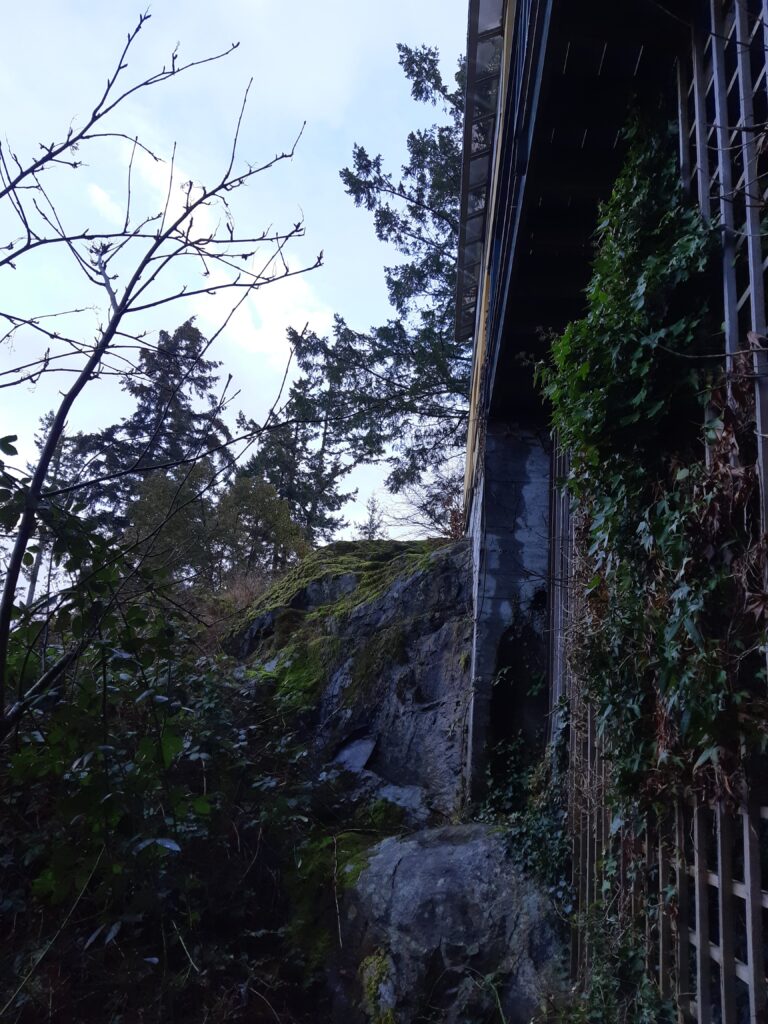Abstract: Gibsons Home Inspector note on foundations built on a bluff.
Rampart Foundations
A rampart means a barrier and in this case the foundation wall certainly fit that description.
When the inspector came around to the back or cliff-side of the property, he was momentarily transported to 16th century Europe with the sight of a foundation that could easily be mistaken for a castle fortification. Possibly an impressive and or oppressive estate on a high hill overlooking the Rhine River. Ready to collect taxes from any river boat passing through its jurisdiction… or else.
Clues on Cliffs
We assess if the foundation is in distress. There are many signs that we look for to give us an indication of performance. Here are some signs worthy of note:
- Is there evidence of earth movement?
- Are any trees leaning downhill?
- Are there loose rocks at the base of the bluff that have fallen down from higher elevations?
- Is there any indication of gully that has been created by erosion?
- What about the concrete foundation? Is it tilting outward?
- Are the footings stable or have they been undermined or are they crumbling?
- What about weep holes in the foundation wall? Are they present to relieve the hydraulic water pressure behind the wall?
- Is the foundation in distress by cracks? Are thise cracks vertical, horizontal or diagonal?
Exposed foundation provide the inspector with a wealth of information on the stability of the house. This element of the inspection should always be reviewed as thoroughly as possible because any distress here can be a major money pit if repairs or restoration work is warranted.

